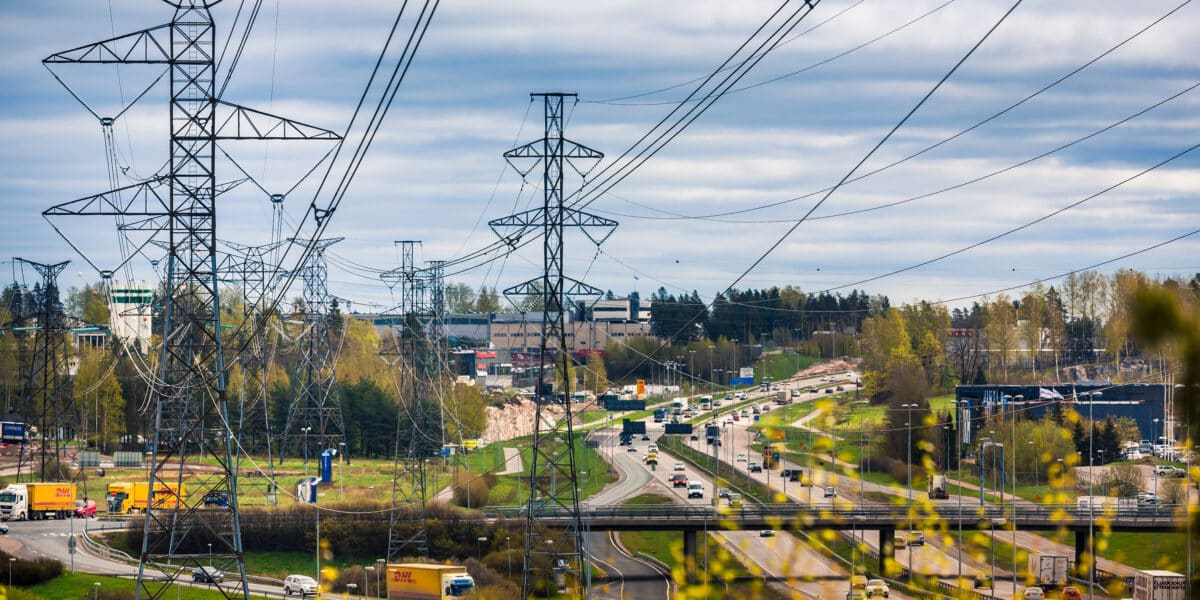Prices diverge when there is insufficient electricity transmission capacity between the various bidding zones in the power exchange.
Out of all the Nordic countries, Sweden and Norway are divided into several electricity price areas. In Finland, the price of electricity on the power exchange is the same throughout the country, irrespective of location.
“In Sweden and Norway, there are major differences between the price areas in terms of electricity production and consumption. Consumption is high in the south, which is also connected to Central Europe,” says Jukka Metsälä, CFO at Fingrid.
When there is insufficient electricity transmission capacity between the price areas, congestion occurs.
“In such cases, an electricity supplier operating in the area with the lower price receives lower price for their electricity than the buyer in the area with the higher price pays for it. The power exchange collects the euro proceeds arising from the differences between the local prices in the areas and the electricity transmission capacity between them. This sum is known as congestion income. Congestion income is shared between the transmission system operators on the basis of EU regulation.”
Fingrid’s congestion income has increased sixfold
Fingrid has also accumulated an exceptionally large amount of congestion income this year.
When congestion arises in cross-border electricity transmission, the congestion income is divided evenly between the transmission system operators. In Sweden and Norway, the congestion income arising within the countries accrues to the transmission system operators.
“The area price differences at the borders between Finland and Sweden and between Finland and Estonia have increased this year, leading to more congestion income than in the previous year. At the end of September, Fingrid had already accrued congestion income of EUR 741 million,” Metsälä says.
In the same period last year, the congestion income amounted to EUR 129 million.
“The market is in a truly exceptional state at the moment. The gas price is high in Europe, and this has had a knock-on effect on every market, raising prices. High prices and fluctuating demand for electricity transmission also amplify the differences between the price areas.”
EU regulations require transmission system operators to spend the accumulated congestion revenue on investments to improve the electricity transmission capacity between price areas. Congestion income can also be used to cover costs directly related to investments in cross-border transmission capacity and related operating costs.
In Finland, the Energy Authority defines how the funds should be spent in line with EU legislation.
“This year, we will spend EUR 140 million of congestion income on investments to improve the cross-border capacity.”
“This year, we will spend EUR 140 million of congestion income on investments to improve the cross-border capacity. The income will also be used to cover the costs of cross-border capacity and the rapid rise in market-based costs,” Metsälä says.
“In addition, the market-based costs of operations have risen rapidly this year. We have been able to offset this using congestion income. Otherwise, we would have needed to raise the grid service fee by approximately 40 per cent. By the end of September, we had spent EUR 119.7 million offsetting the increase in costs this year.”
Congestion income in Sweden eight times higher
In Sweden, approximately EUR 5.5 billion had been accumulated in congestion income by the end of September. This is almost eight times the amount accrued in Finland. There has been a proposal to refund the income to compensate for high electricity prices.
The local transmission system operator is currently working on a plan for using the congestion income.
“In Sweden, a lot of congestion income arises from electricity transmission within the country. That is why the scale is so much larger in Sweden,” Metsälä notes.
The congestion income accumulated in Norway was about double that of Finland, and plans are currently being made on how to use the income.
A decision has been made both in Norway and Sweden to substantially reduce grid service fees due to the high congestion income.
“In a way, we are also giving back the accumulated congestion income all the time by using it to offset the dramatic rise in costs and by announcing to waive grid service fees.”
“In a way, we are also giving back the accumulated congestion income all the time by using it to offset the dramatic rise in costs and by announcing to waive grid service fees.”
Fingrid will waive the grid service fee for all of Finland’s electricity distribution system operators, numbering more than 70 in total, as well as the same number of electricity production and industrial companies.
This decision to waive the grid service tariff applies to all of Fingrid’s main grid customers, including electricity producers and, in particular, large-scale industries that consume a lot of electricity.
“A substantial share of Fingrid’s grid service fees are allocated to the total electricity consumption, and a much smaller share of the fees remains to cover electricity production. In other words, electricity consumers benefit the most from this.”
Grid service fees will be waived for several months
Fingrid has previously announced its plan to waive the grid service fee in December this year. Fingrid will also waive the fees in January, February and June 2023, as well as in two summer months.
Fingrid was able to make this decision because it has accrued record congestion income, which can cover the higher costs of operating the main grid and waiving the grid service fee.







